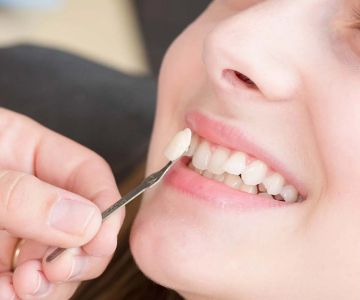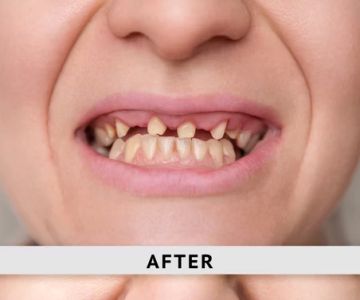
What Is Restorative Dentistry? A Complete Guide to Procedures and Benefits
- 1. Understanding Restorative Dentistry
- 2. Common Restorative Dental Procedures
- 3. Types of Restorative Dentistry
- 4. The Benefits of Restorative Dentistry
- 5. Restorative Dentistry vs. Cosmetic Dentistry
- 6. When to Consider Restorative Dentistry
- 7. Real-Life Case Studies in Restorative Dentistry
- 8. How Restorative Dentistry Improves Your Oral Health
- 9. Dentistry Toothtruth Restorative Dentistry Services
1. Understanding Restorative Dentistry
Restorative dentistry is a branch of dental care focused on restoring the function and appearance of damaged or missing teeth. It involves a wide range of procedures aimed at repairing or replacing teeth to restore oral health, enhance the smile, and improve chewing function. If you’ve ever had a cavity filled, a crown placed, or a bridge installed, you’ve already experienced aspects of restorative dentistry.
Unlike preventive or cosmetic dentistry, which focus on avoiding or enhancing the aesthetics of the smile, restorative dentistry directly addresses dental issues that have already occurred. Whether due to decay, injury, or natural wear, restorative treatments are essential in maintaining long-term oral health and preventing further damage.
2. Common Restorative Dental Procedures
There are several key procedures commonly used in restorative dentistry, each addressing different types of dental issues:
- Fillings: The most basic restorative treatment, fillings are used to treat cavities. Materials such as composite resin, amalgam, or porcelain are used to fill the decayed part of the tooth and restore its shape and function.
- Crowns: Crowns are used to cover damaged or weakened teeth. They restore the tooth’s size, shape, and strength. Crowns are often recommended after a root canal or for teeth that are severely worn down.
- Bridges: Bridges are used to replace one or more missing teeth. They consist of a false tooth anchored by crowns placed on the adjacent healthy teeth, filling in the gap left by missing teeth.
- Implants: Dental implants are artificial tooth roots placed into the jawbone to support a replacement tooth. They offer a permanent solution for replacing missing teeth and prevent bone loss in the jaw.
- Dentures: Dentures are removable prosthetic devices used to replace multiple missing teeth. They can be partial or complete, depending on the extent of tooth loss.
3. Types of Restorative Dentistry
Restorative dentistry can be divided into several categories based on the type of procedure performed:
- Direct Restorations: These treatments are applied directly to the cavity or damaged area in one visit. Fillings are the most common example of direct restorations, where the material is placed and shaped right into the tooth.
- Indirect Restorations: These treatments involve creating a custom restoration outside the mouth, which is then placed during a follow-up appointment. Crowns, bridges, and veneers are common indirect restorations that are fabricated in a dental lab.
- Prosthodontics: This specialized area of restorative dentistry focuses on restoring missing teeth with dental implants, bridges, and dentures. Prosthodontists have advanced training in creating solutions to restore full-function to the mouth after tooth loss.
4. The Benefits of Restorative Dentistry
Restorative dentistry offers numerous benefits that go beyond simply fixing a tooth. These treatments can significantly improve your quality of life and oral health:
- Improved Functionality: Restorative procedures, such as implants or crowns, restore the function of damaged or missing teeth, allowing you to chew, speak, and smile with confidence.
- Prevention of Further Damage: Restorative treatments prevent small issues from turning into major problems. For instance, fillings prevent further decay, while crowns protect weakened teeth from breaking.
- Enhanced Aesthetics: Many restorative treatments, such as veneers and crowns, are designed to look like natural teeth, improving the aesthetics of your smile and boosting your self-esteem.
- Long-term Durability: Restorative dental treatments like implants and crowns are built to last for many years, making them a long-term investment in your oral health.
5. Restorative Dentistry vs. Cosmetic Dentistry
Although restorative and cosmetic dentistry may seem similar, they serve different purposes. Restorative dentistry focuses on repairing or replacing damaged teeth to restore their function and health. In contrast, cosmetic dentistry is primarily concerned with improving the appearance of the teeth, gums, and smile.
While there is some overlap (for example, crowns may improve both function and appearance), the main goal of restorative dentistry is to solve functional problems, whereas cosmetic dentistry focuses on aesthetics. For example, a person with a chipped tooth might need restorative care to repair the tooth's functionality, while cosmetic dentistry might be used to reshape the tooth for a more harmonious appearance.
6. When to Consider Restorative Dentistry
If you have damaged or missing teeth, restorative dentistry may be a viable solution. Consider restorative dental treatments if you experience:
- Severe tooth decay or cavities that cannot be treated with simple fillings
- Chipped, cracked, or broken teeth
- Missing teeth that impact your ability to chew or speak properly
- Gum disease that has resulted in tooth damage or loss
Consulting with your dentist is the first step toward restoring your smile and oral health. Your dentist will recommend the most appropriate treatment based on your individual needs.
7. Real-Life Case Studies in Restorative Dentistry
Let’s consider the story of John, a 45-year-old patient who suffered from severe tooth decay and gum disease. After a thorough evaluation, his dentist recommended a combination of restorative procedures, including implants and crowns. Within just a few months, John was able to regain full function of his mouth, restore his smile, and improve his overall health. His case is a prime example of how restorative dentistry can completely transform both the appearance and function of your teeth.
8. How Restorative Dentistry Improves Your Oral Health
Restorative dentistry plays a crucial role in maintaining and improving your overall oral health. By addressing issues such as decay, tooth loss, and damage early on, restorative treatments prevent the development of more serious complications like tooth infections or jawbone deterioration. Restoring missing teeth with implants or bridges also helps maintain the integrity of your jawbone, preventing bone loss that often occurs when teeth are lost or extracted.
9. Dentistry Toothtruth Restorative Dentistry Services
At Dentistry Toothtruth, we specialize in providing comprehensive restorative dentistry services to help patients restore their smiles and oral health. Whether you're in need of fillings, crowns, implants, or dentures, our team of experts is here to provide personalized, high-quality care tailored to your specific needs. Visit our website for more information about our restorative dental treatments and to schedule a consultation.







 Westgate Dental Arts
Westgate Dental Arts Coventry Family Dental
Coventry Family Dental Familia Dental
Familia Dental Dr. Daniel S. Fife, DDS
Dr. Daniel S. Fife, DDS Dentistry At Suburban Square: Michael I. Wollock, DMD
Dentistry At Suburban Square: Michael I. Wollock, DMD Comfort Care Dental
Comfort Care Dental The Importance of Oral Health Education During Pregnancy for a Healthy Pregnancy
The Importance of Oral Health Education During Pregnancy for a Healthy Pregnancy Why Skipping Dental Checkups Can Lead to Bigger Oral Health Problems
Why Skipping Dental Checkups Can Lead to Bigger Oral Health Problems Advantages of Porcelain Dental Restorations
Advantages of Porcelain Dental Restorations Best Tips for Brushing Your Teeth Properly for Healthy Gums: Essential Techniques for Oral Health
Best Tips for Brushing Your Teeth Properly for Healthy Gums: Essential Techniques for Oral Health How Can Diabetes Cause Tooth and Gum Problems? Preventing and Managing Oral Health Issues
How Can Diabetes Cause Tooth and Gum Problems? Preventing and Managing Oral Health Issues Healthy Habits for Promoting Good Oral Health and Hygiene: Tips for a Healthy Smile
Healthy Habits for Promoting Good Oral Health and Hygiene: Tips for a Healthy Smile